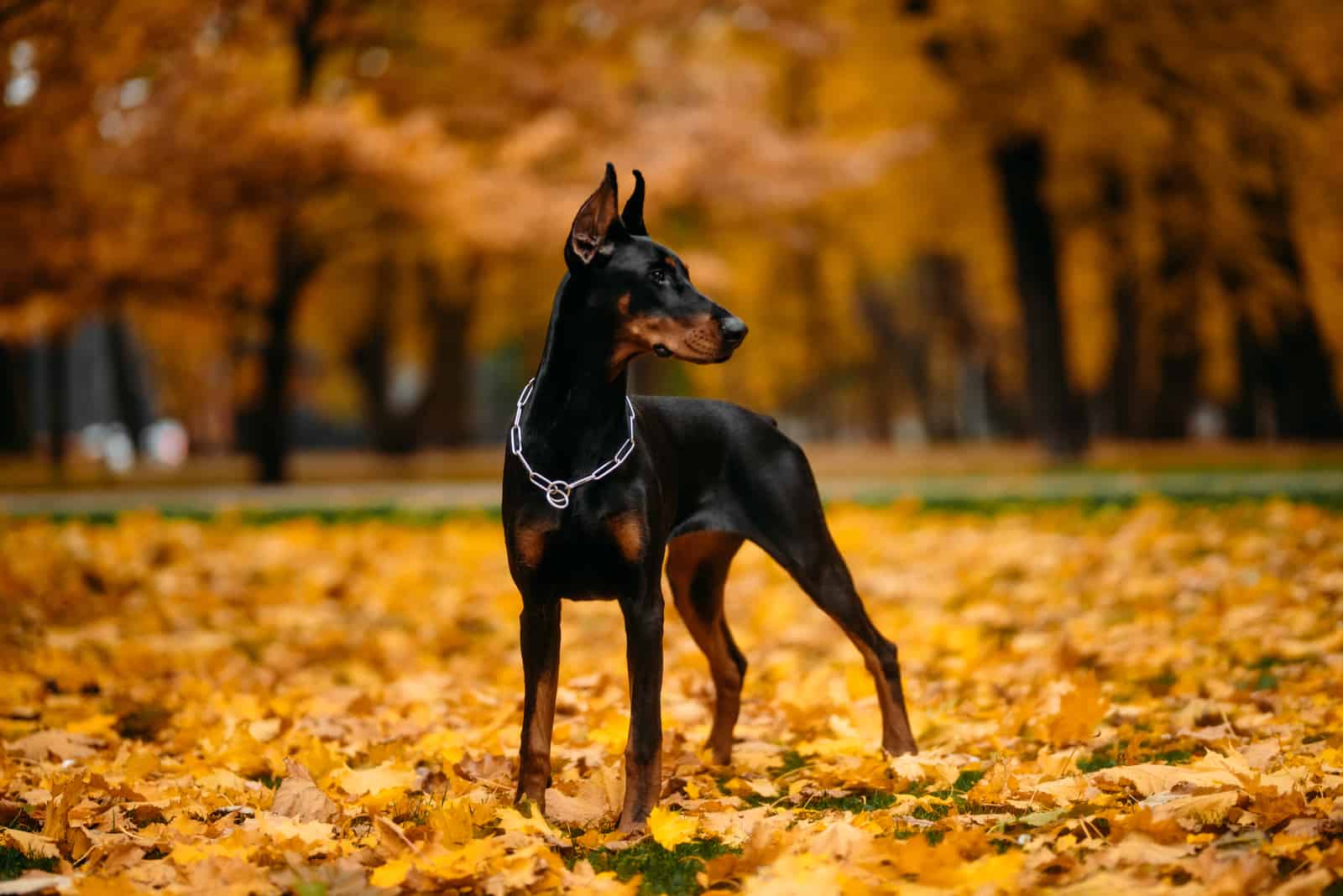Rottweilers, Pitbulls, Mastiffs, and finally, Dobermans. Yes, these are some of the dog breeds with terrible publicity.
Many people steer away from Dobermans because they’re considered to be dangerous. However, the truth is quite different.
Yes, they’re dominant, loyal guardians, but Dobies can be sweet – just like their coat colors!
Doberman colors come in nine pretty varieties. I like to say they truly match what’s inside.
All of them are stunning in their own way, but only some of them are considered to be ethical.
Which Doberman colors are the standard ones and which are not that common? Let’s find out!
What Kind Of Coat Does A Doberman Have?
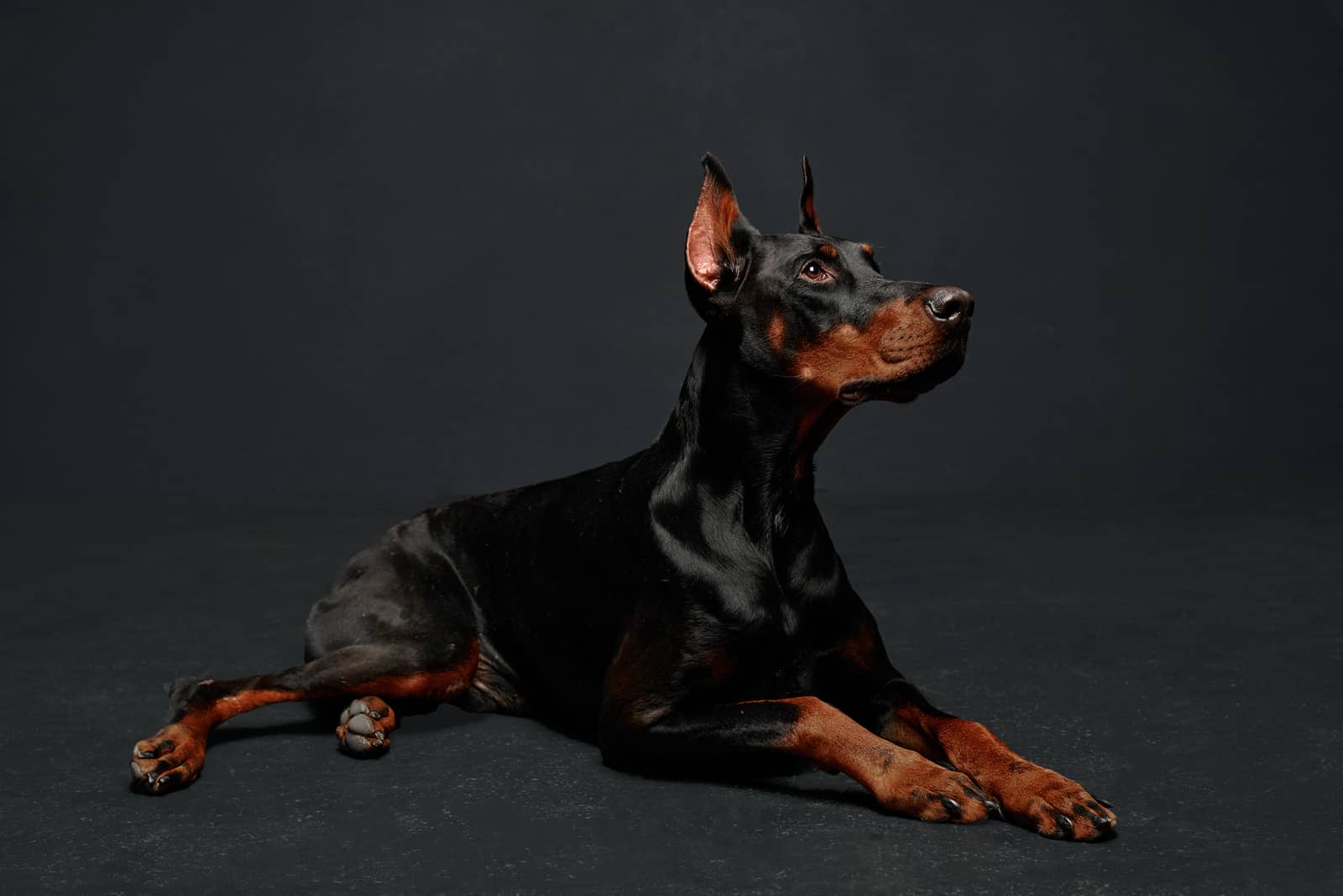
Dobermans are known for their silky-smooth coat. They’re not one of the fluffy lap dogs, and their temperament isn’t such either.
These dogs fashion a short coat which lies quite close to their skin. It’s smooth, sleek, and doesn’t have an undercoat. There is a bit of fluff and a thin undercoat around the neck with some Dobes.
Having a short coat means Dobermans are not good in cold weather situations. They’re not so good in the summer either!
Since Dobermans come in many different colors, you should be aware that some of them, like black and tan, should stay away from the sun.
What Are The Standard Doberman Colors?
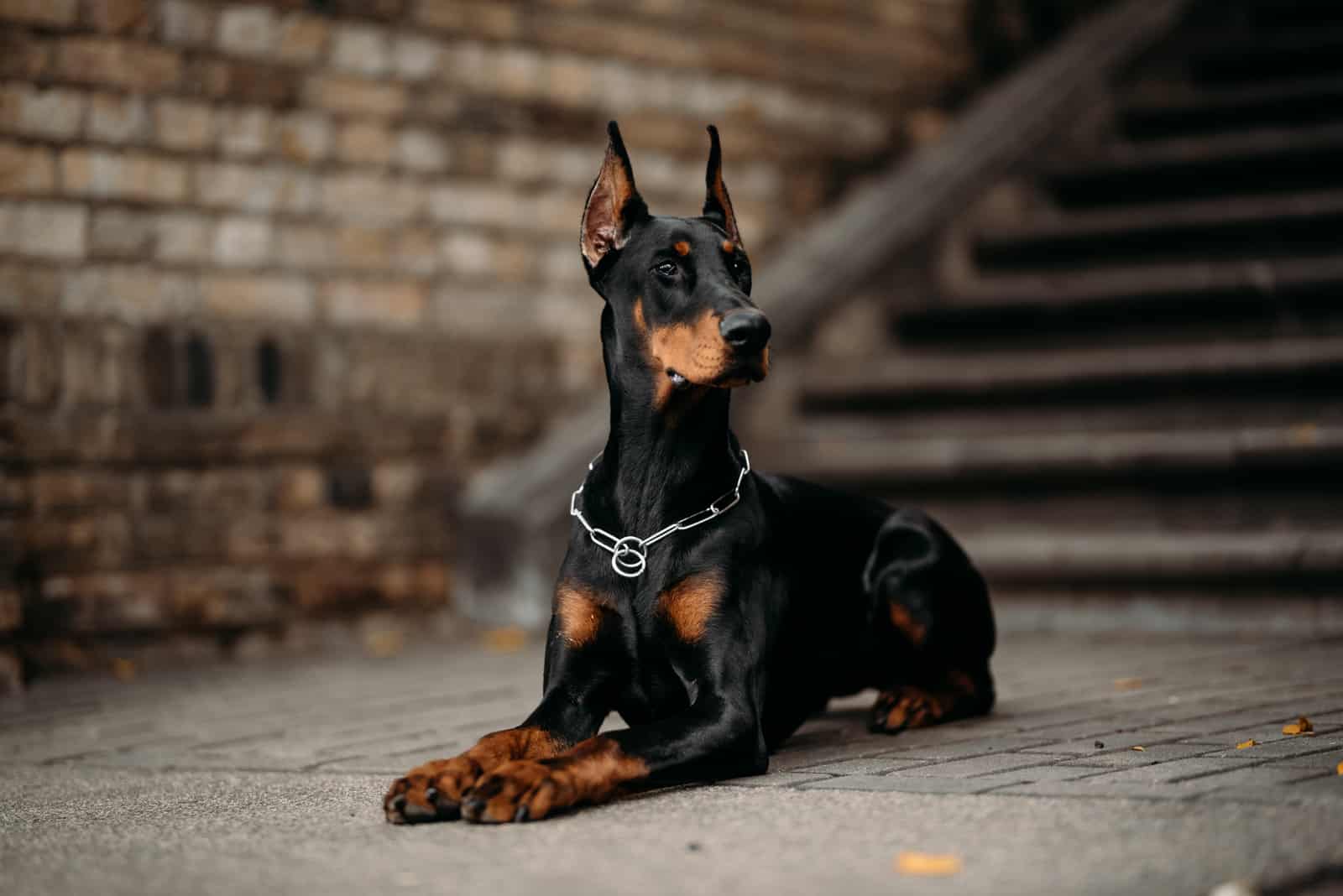
Dobermans are purebred dogs, bred according to the breed standards of the American Kennel Club (AKC). However, not all the colors you see with Dobies are recognized by this official club.
Standard, or recognized Doberman colors are:
black and rust
red and rust
Isabella and rust
blue and rust
Black And Rust Dobermans
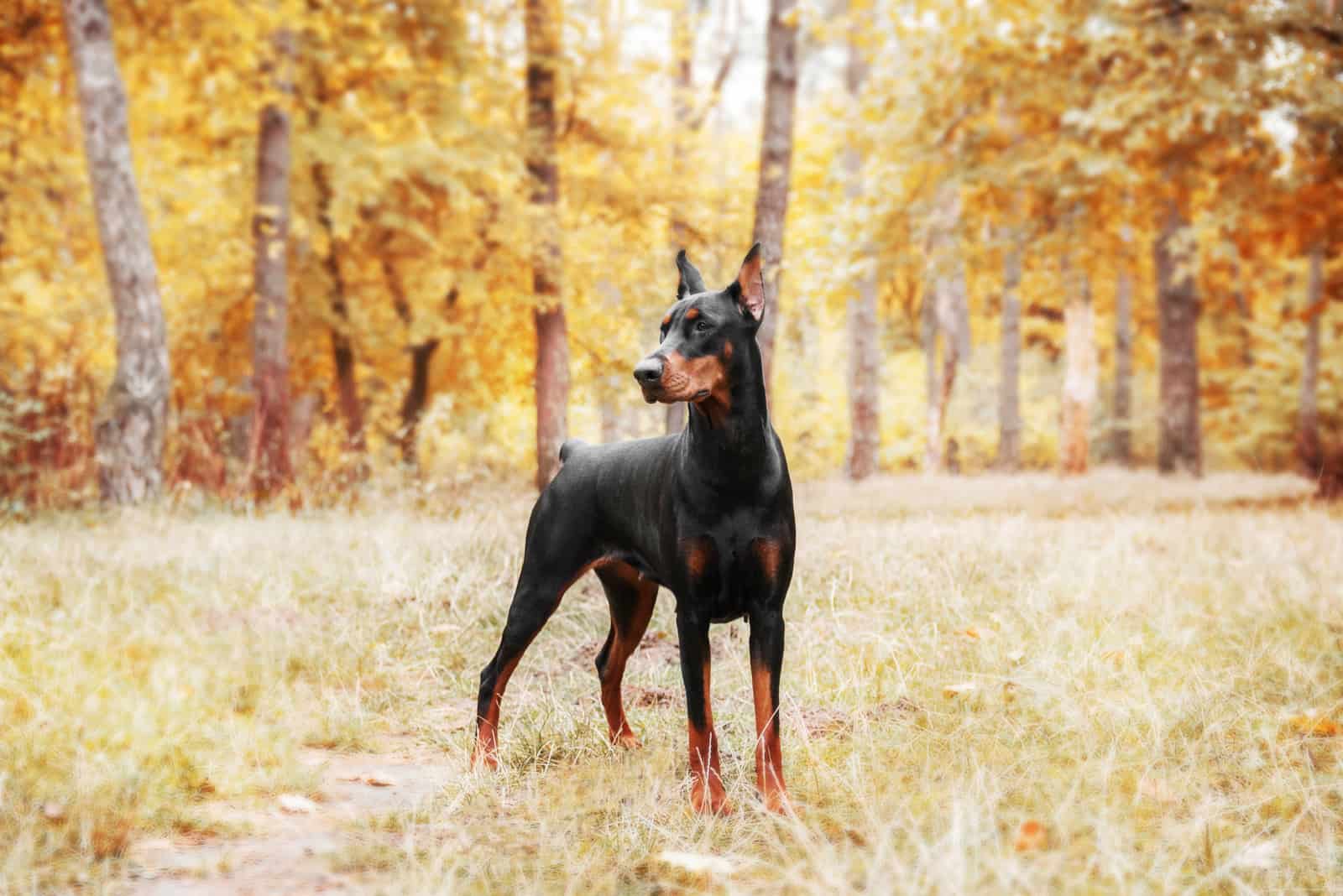
Black and rust (or black and tan) Dobermans are what you think of when someone mentions the Doberman breed.
These dogs have not only the most common coat option, but they’re the most desirable one, too. I bet a lot of you guys didn’t even realize that
Doberman colors can be something other than the black and tan option.
Dogs with this coat have a silky black base, and tan markings with sharp lines. The contrast between the two coat shades is quite dominant.
Here’s a little help for you to imagine a black and rust Doberman in case you haven’t seen one earlier!
The black coat base is covered in markings of a lovely rust or tan shade spotted on the dog’s face / muzzle, above the eyebrows, on the ears, on the chest area, underneath the tail, and on the dog’s legs.
Now that you can imagine these Dobies, I believe you realize how lovely-looking they are.
The black and tan (or rust) is the so-called signature color of these dogs. Some even call them black and brown Dobermans. Either way you refer to them, these Dobermans will remain the most popular color option in the entire world.
Red And Rust Doberman
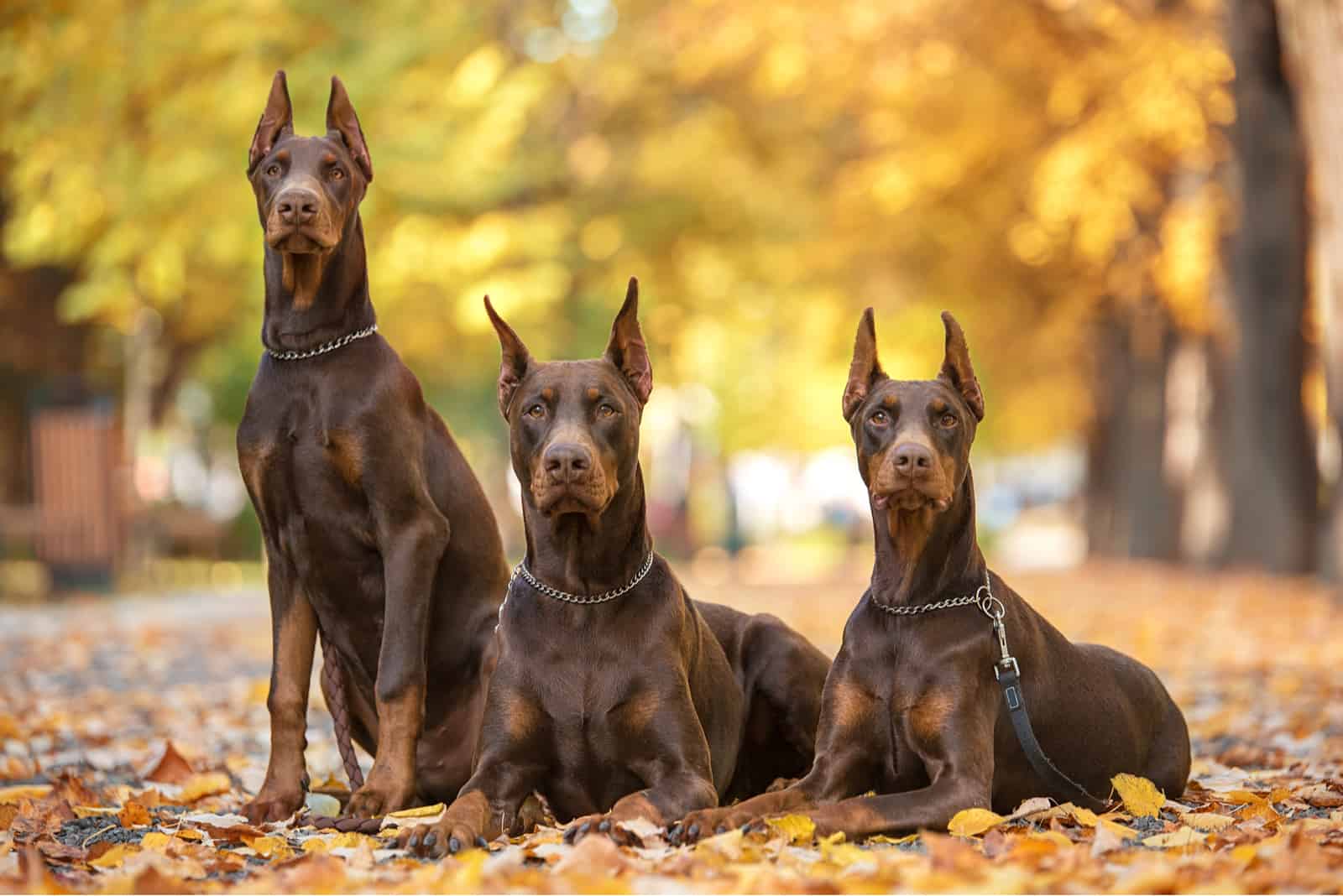
After the black and rust Doberman, we have the red and rust one. This color variant is the second most popular of all nine options. However, it’s still quite unpopular compared to the first coat color we discussed.
When you look at the red and rust (or tan) Dobies, you’ll notice they appear to be a shade of dark red-brown – quite an unusual combination. That’s why many dog lovers refer to them as brown Dobermans!
These dogs carry rusty markings on the usual spots: above the eyes, on their muzzle, ears, legs, chest, under their tail, and on their bottom.
Unlike black and tan Dobies which have clear lines between two contrasting colors, red and rusty Dobies have subtle transitions between the base color and the markings color. Their rust or tan is, in fact, light brown in shade.
Still, the red and rust Dobies are very unique-looking, desirable, and considered standard with the AKC.
Isabella And Rust Doberman
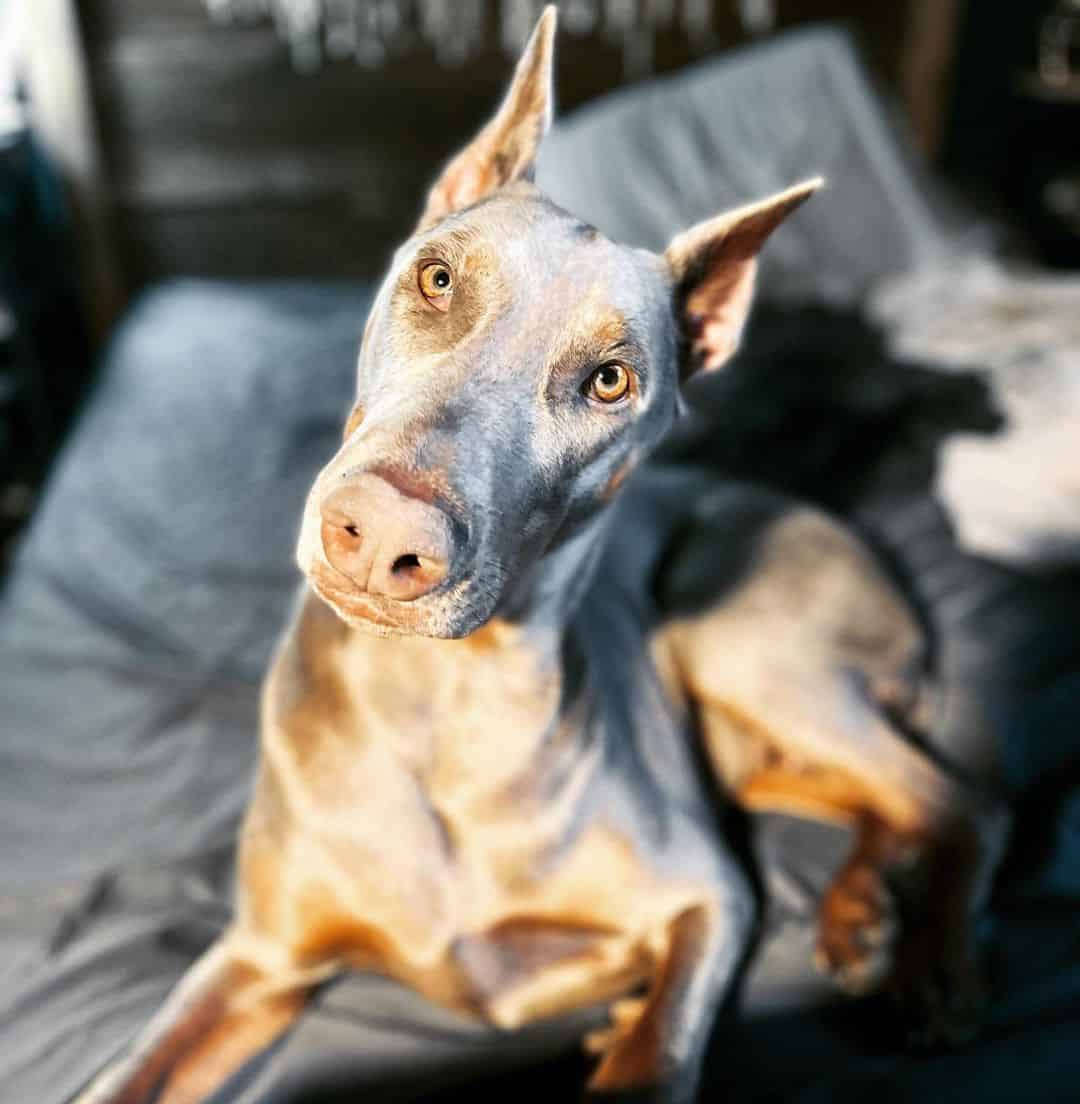
Photo from: @lily.gets.lifted
Although the Isabella/fawn and tan coat option is recognized by the official kennel club, it’s still not as popular as other shades.
But, this doesn’t mean that the coat color is not as stunning as any other!
The Isabella and rust Dobies have the recessive dilute genes to thank for their uniqueness. These pups carry red genes instead of the usual black ones. The dilution affects the genes and results in a diluted red coat, also called fawn or Isabella.
Those of you who aren’t familiar with this color may think of these Dobermans as milky chocolate-colored pups. Truly, they have a light coat shade that does resemble milk chocolate or chocolate milk (depends on what you’re craving!).
The truth is, fawn and tan Dobermans have zero to little contrast between the base coat and the markings. The difference is beyond subtle, but if you watch them from another angle, you’ll see that these dogs still have the signature tan markings.
I find Isabella and tan Dobermans to be quite sweet and a bit funny-looking. Do you like them?
Blue And Rust Doberman
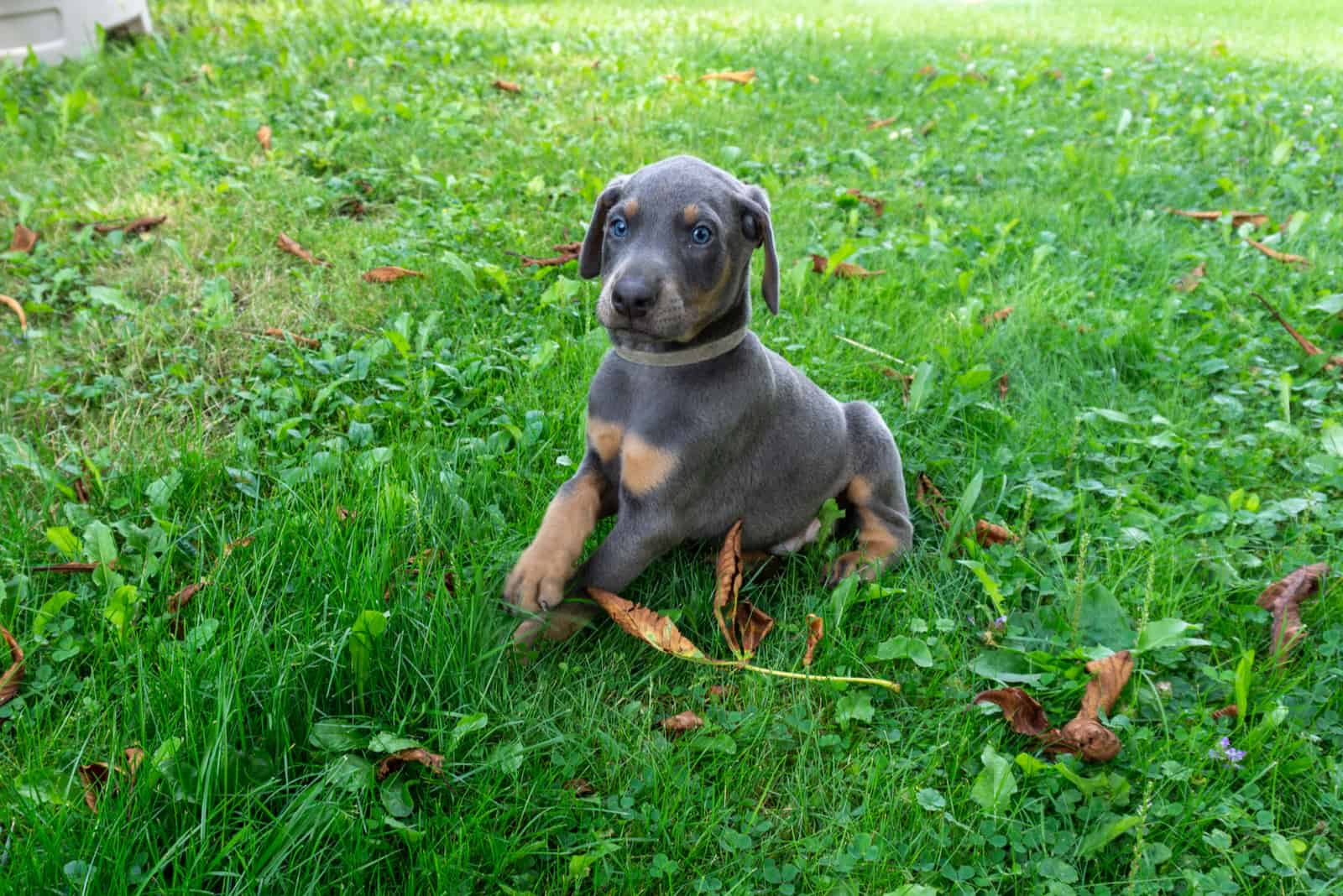
Lately, I’ve seen a phenomenon coming alive. It’s the pawmazing blue and rust Doberman!
These Dobies are quite the rage these days for their incredible work ethic and stunning appearance. Well, stunning doesn’t even begin to describe how beautiful blue and rust Dobies are!
Despite being so rare, blue and tan Dobermans are a registered color. Just imagine how spectacular they would look competing in a conformation show! I see many blue ribbons coming their way!
Many dog lovers will think their blue color is actually gray. Well, I can’t blame them because the blue coat color does have a silver hue with a tint of purple added for a glossy finish.
Even if you call them a gray Doberman, you won’t be wrong.
Blue and rust Dobermans also have recognizable markings on specific points. The transition between the shades is not that noticeable like with standard black and tan pups. It’s subtle and very fine.
What Is The Rarest Doberman Color?
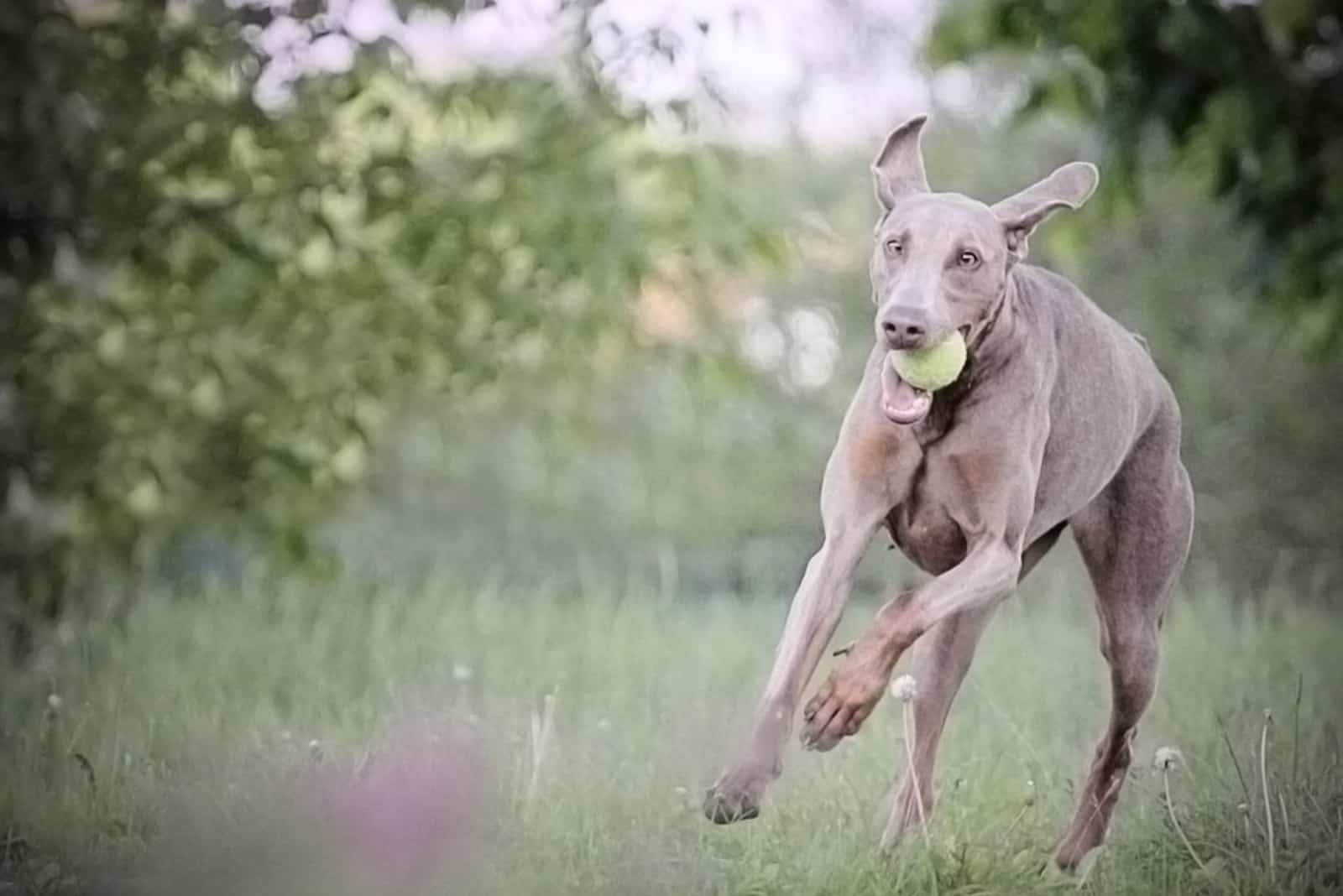
Not only are they rare, but these colors are not accepted with official clubs. In fact, all of them are a result of poor breeding – sometimes even inbreeding. As such, these colors carry health problems for your Dobie.
The rare Doberman colors include:
pure white
pure black
pure blue
solid red
Isabella or fawn
Pure White Doberman
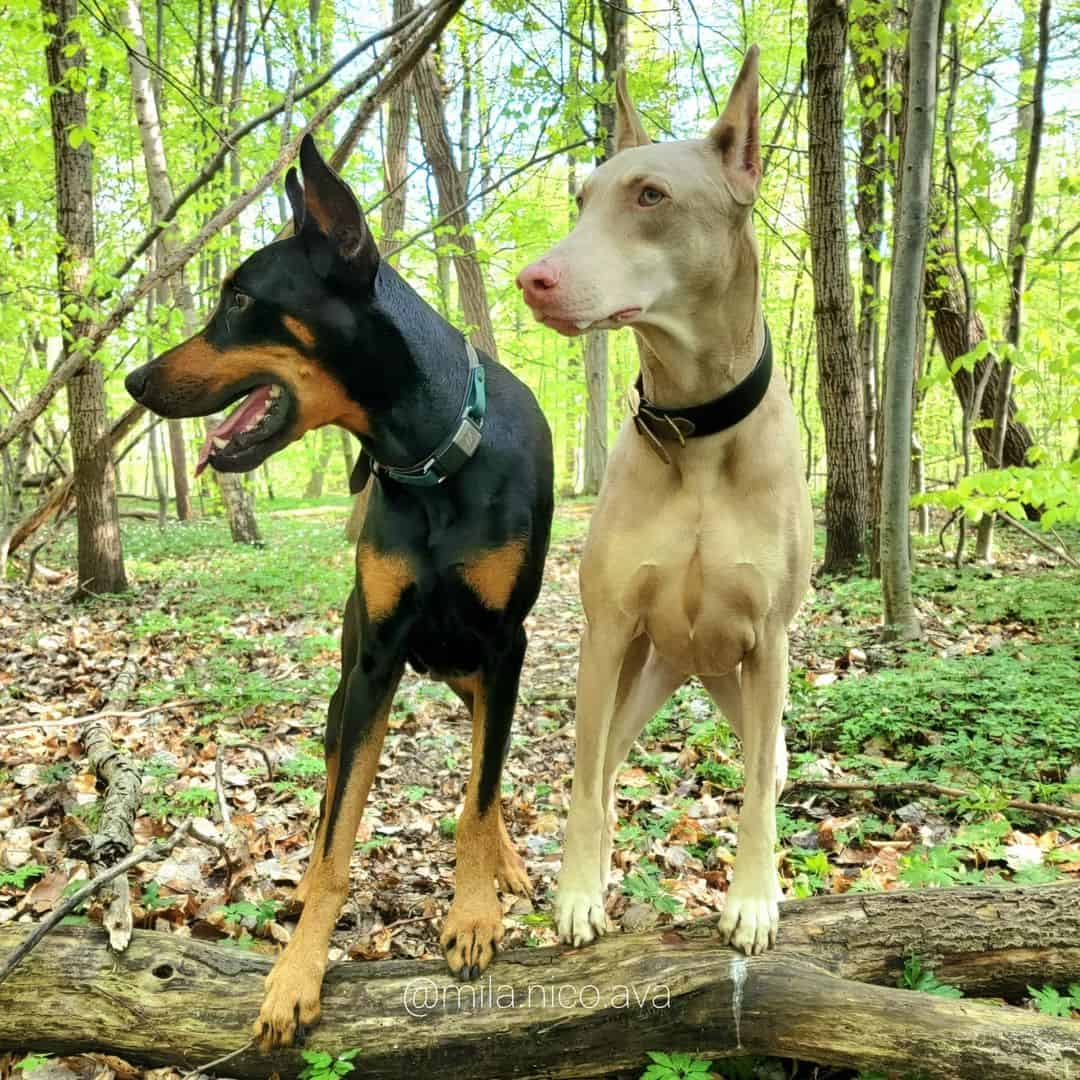
Photo from: @mila.nico.ava
The rarest of all Doberman colors is white. The uniqueness factor doesn’t depend on the color’s beauty, but the frequency by which this coat color appears.
When we talk about white Dobies, you should know that even creamy-coated Dobermans are considered white because there is no other coat option that would classify them as cream or beige.
Sadly, the white coat is a result of inbreeding throughout the years. It all started back in 1976 when the first white Doberman, Sheba, was bred for her unusual appearance.
Today, all of the white/cream Dobermans are categorized as partial albino Dobermans.
Sadly, these dogs, despite their looks, are not desirable with the official clubs, or dog owners who care about the dog’s well being.
You see, albino dogs come with a bunch of health problems that can’t be detected in time. It is known that they suffer from certain behavioral issues due to inbreeding. Also, they’re very sensitive to light, and are prone to blindness and terribly poor eyesight.
But, photosensitivity, skin problems, cancer developing from skin issues, and eye problems only scratch the surface of the many health concerns with this Doberman puppy.
And, here’s something you probably didn’t know: White Dobermans are banned from a lot of countries. The American Kennel Club is working on banning them from the states, too!
If you see a breeder advertising these pups, don’t even think about buying them! If you buy, you will support an unethical business and end up with a puppy that will most definitely need constant medical attention.
No reputable breeder will agree to breed a dog with a severe genetic mutation like albinism! Their pink nose and pretty blue eyes might be cute, but think what lies beneath the outer appearance.
All-Black Doberman
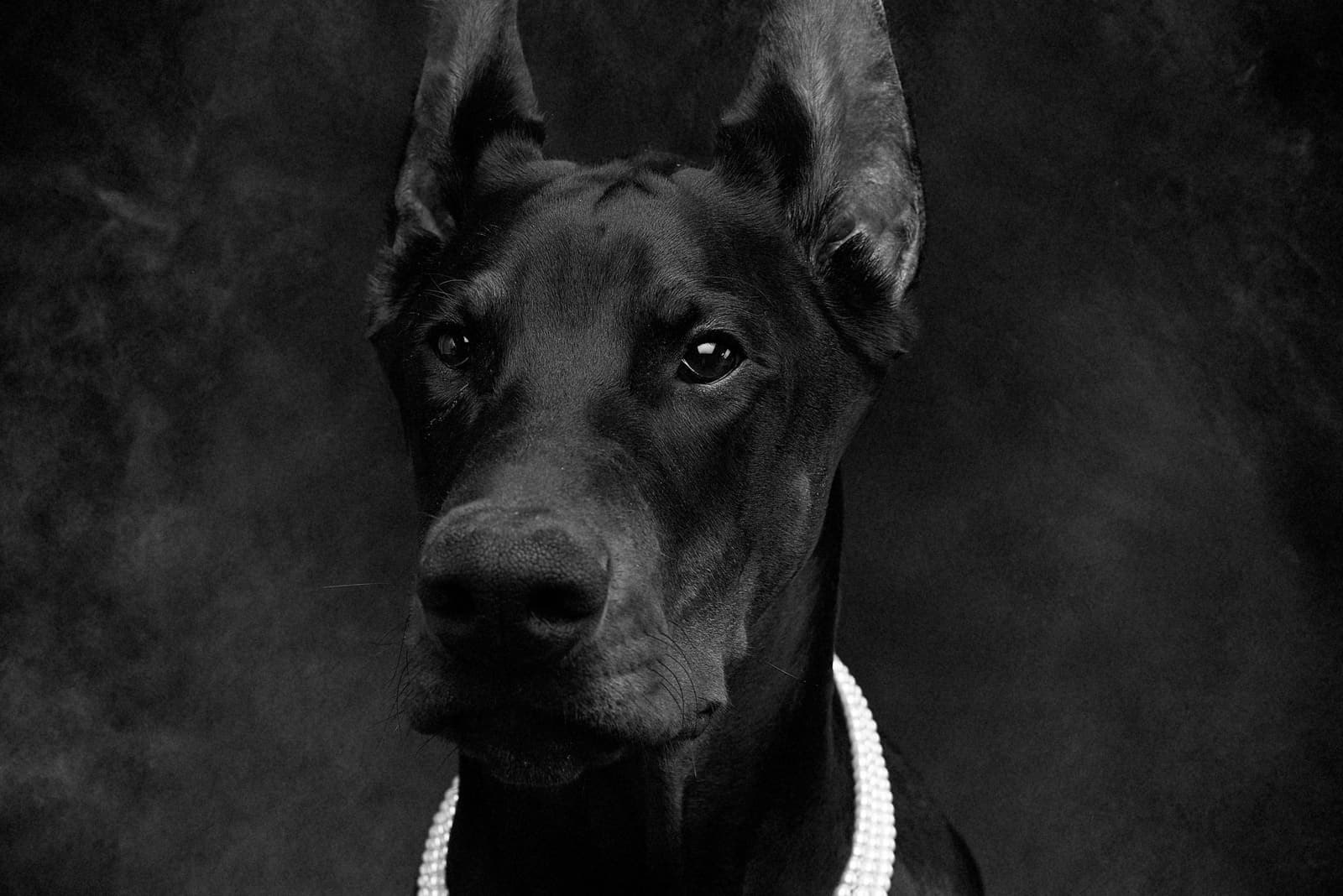
We’re used to seeing many all-black dogs on the streets. Black is, in fact, one of the standard coat colors for all dogs. But, despite popular belief, that’s not the case with an all-black Doberman.
Dobermans with a black coat are melanistic Dobermans. This variety is surprisingly very rare. A lot of people believe that the black & rust Doberman with subtle contrasting can pass as a black variety. Boy, they couldn’t be any more wrong!
Black Dobermans are completely unethical to breed, and they carry numerous potential health issues. The black gene is dominant over the dilute gene and doesn’t allow it to come through.
Since this is a non-recognized coat color, I suggest you be careful with breeders selling all-black puppies, along with their AKC paperwork.
You should know that’s impossible, and no reliable breeder would sell a black Dobie under a registered one.
The Blue Doberman
If you thought the black Doberman is rare, wait until you see the all-blue one!
Blue Dobies are one of the rarest coat options of them all. Along with their canine buddies, French Bulldogs, blue Dobermans (as completely blue dogs) bring many health defects.
You can expect to encounter Von Willebrand’s disease with your pup, as well as Cardiomyopathy, and Color Dilution Alopecia (or severe hair loss).
Even though some blue Dobermans may be healthy, they still carry genes for these diseases, and as such, they should not be bred further. Buying a blue Doberman is considered to be unethical despite their stunning appearance.
This diluted blue color does appear cool, but let your dog’s health be in first place.
Solid Red Doberman
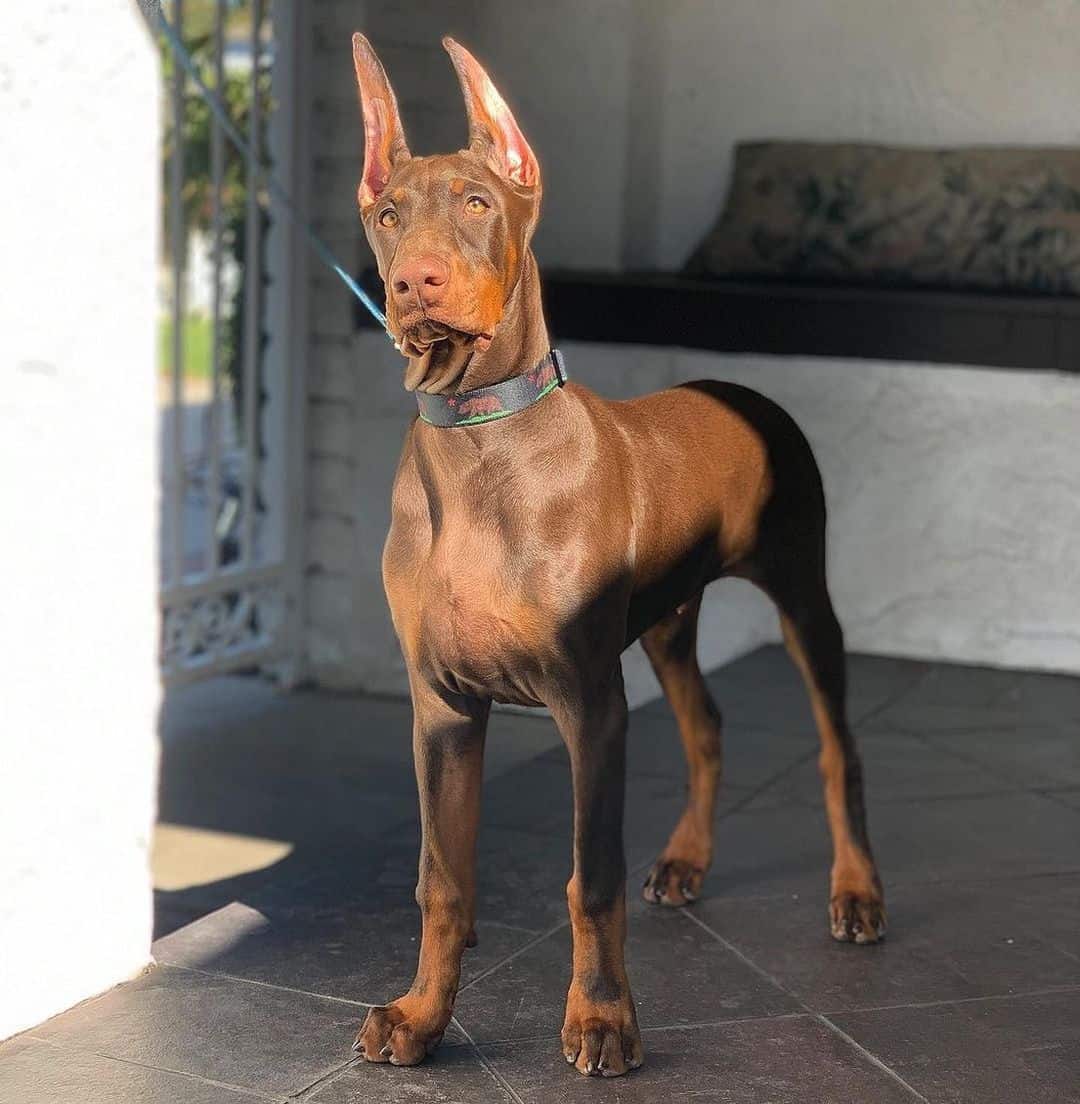
Photo from: @doberman_worldwide@doberman_worldwide
Another melanistic coat color is solid red.
These Dobies are also called chocolate Dobes and, as you can imagine, they’re unethical to breed, raise, and own.
While this isn’t a common color, the red Doberman is pretty hard to find, and not many dog owners can confirm they have one. They’re not the rarest of them all, but still, they’re not as popular as other colors of Dobermans.
Isabella (Or Fawn) Coat Color
Lastly, we come to the rarest Doberman color of them all!
It’s Isabella (or fawn color) – something you don’t see every day. Well, you do with some other breeds like the Weimaraner.
The reason why it’s so hard to find an Isabella Doberman is because they bring so many health problems that you’d be shocked!
Still, this doesn’t stop certain breeders from listing fawn Dobermans as something spectacular, unusual, or exotic. These breeders are using the fact that not many people are familiar with canine genetics, so they try to make fast money by selling unethically bred dogs.
What Are The Two Types Of Doberman?
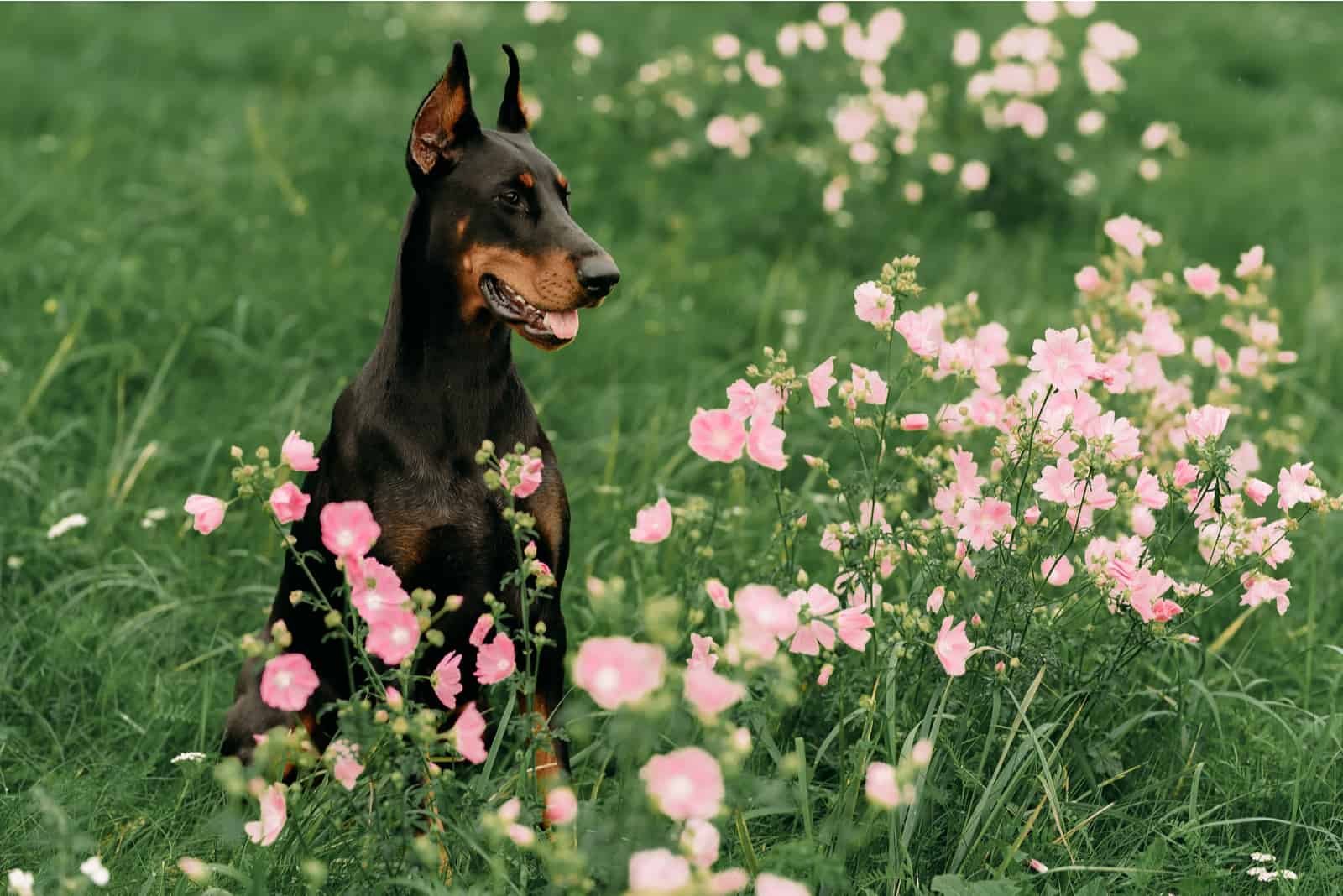
European Dobermans
European Dobermans (or Dobermann) (with two n’s) are ultimate working dogs. They’re a result of one man’s desire for safety. Back in the days, in Germany, Karl Friedrich Louis Dobermann created the first Dobies. He didn’t know his breed would become so popular!
Of the two Doberman types, European Dobies are bigger and taller. They’re not chubby dogs. Instead, these Dobies have more muscles and a dense bone structure. Their chest is quite broad, while their head is large, blocky, and with a thick muzzle.
European Dobes are bigger, but they’re shorter than American ones.
Another thing that sets them apart from their U.S. buddies is pigmentation. They come with deep rust markings and dark-colored eyes.
Even though both Dobie types are excellent guard dogs, European Dobes have more stamina to endure through hard tasks. They seem to be braver and more alert than their American counterparts. No wonder these pups are all-star police dogs, along with German Shepherds!
American Doberman
The American side of the big Doberman family is usually used for entering dog shows and competing in conformation. Even though they’re Dobermans, I don’t categorize them as 100% working dogs.
American Dobermans have more pet quality than working-dog quality. They seem to have a sweeter temperament, a graceful attitude, and less courage. However, this makes them excellent family pups.
Another thing that makes them perfect for families is the fact that American Dobies are smaller in size. These dogs don’t have as much muscle mass as DobermaNNs.
They’re shorter AND lighter dogs, with a slender appearance. Their head and muzzle is short and not so blocky as with European Dobies.
Everything is light with these dogs, even their coat colors!
While they still fashion the same standard colors, American Dobermans seem to have lighter markings and light-colored eyes.
What Kind Of Markings Do European Dobermanns Have?
As you may have already figured out, Dobermans are the kind of dogs with special pigmentation markings on some points of their body.
All dog breeds can come with markings, but usually, those markings are random and not a part of the breed standard.
According to the FCI breed standard for European Dobermanns, these dogs will be marked on their muzzle, above their eyebrows, on their throat, ankles, toes, and cheeks.
Also, European Dobies come with two coloration spots on their chest.
What Kind Of Markings Do American Dobermans Have?
Just like their European pals, these dogs have markings always on the same points.
Different pigmentation than the base coat can be found on the muzzle, chest, throat, feet, legs, below the tail, and above the eyes.
Another unique marking of these Dobermans is the white patch on their chest, which shouldn’t be bigger than 1/2 inch square.
What Are Warlock Dobermans?
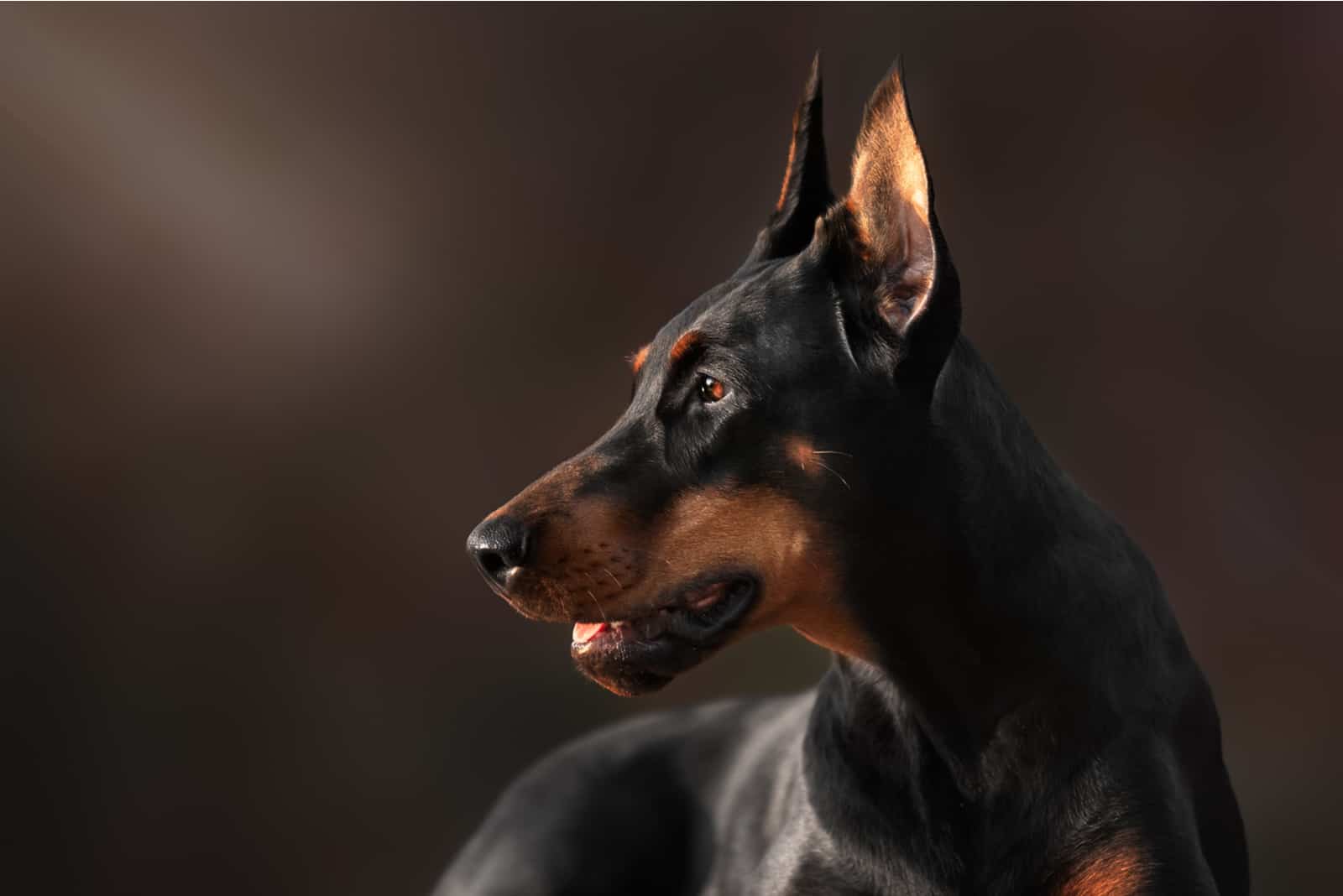
Raise your hand if you’ve heard of the term Warlock Doberman!
Yes, I bet you didn’t!
Lately, I’ve seen this term all over the place. Naturally, I was skeptical because as far as I know, there are only two types of Doberman.
Of course, my hunch was right! These aren’t purebred Dobermans. Warlock Dobermans are actually a crossbreed! When you breed the Doberman and the Great Dane, you get the Warlock (or King Doberman). Some also call them Goliaths.
I understand that the breeders wanted to make the ultimate guard dog, but they did something wrong during the process. It’s listing these puppies as Dobies when they’re, in fact, Doberdane puppies.
The Doberman Pinscher Club of America does not allow these dogs. They’re being bred and raised by backyard breeders only, and as such, shouldn’t be sold at all.
Are Dobermans Hypoallergenic?
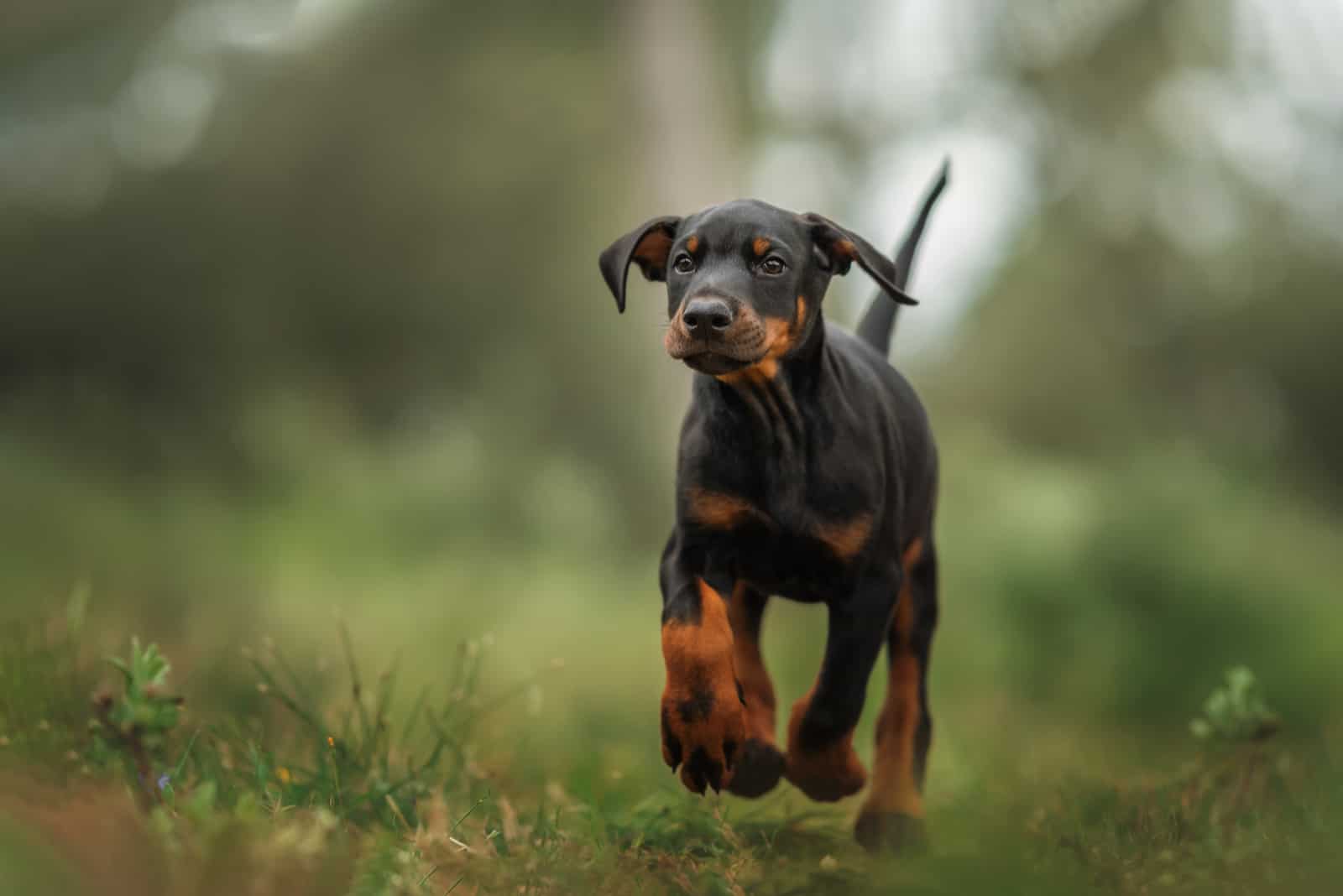
Despite what you may have heard, Dobermans aren’t a hypoallergenic dog breed.
Many people believe that Dobies are great for allergic people because they have a sleek coat that doesn’t shed.
Well, they’ve got one part right!
Dobermans do have a sleek, short coat that sheds normally. They’re not huge shedders like German Shepherds, but they still shed a bit.
These dogs require regular brushing and grooming to keep their coat looking shiny, but more on that soon.
If you’re really interested in getting a hypoallergenic dog breed, but you hold Dobermans close to your heart, maybe you should consider one of the Doberman mixes, such as the Doodleman!
The Doodleman is a Dobie and Poodle mix that carries hypoallergenic traits. Still, there is no 100% guarantee that all Doodleman puppies will inherit the hypoallergenic traits from the Poodle parent.
Be it as it is, Doodlemans are funny, quirky, and adorable pups. Think of them as Dobies with softer appearances and even a softer heart!
How To Groom A Doberman
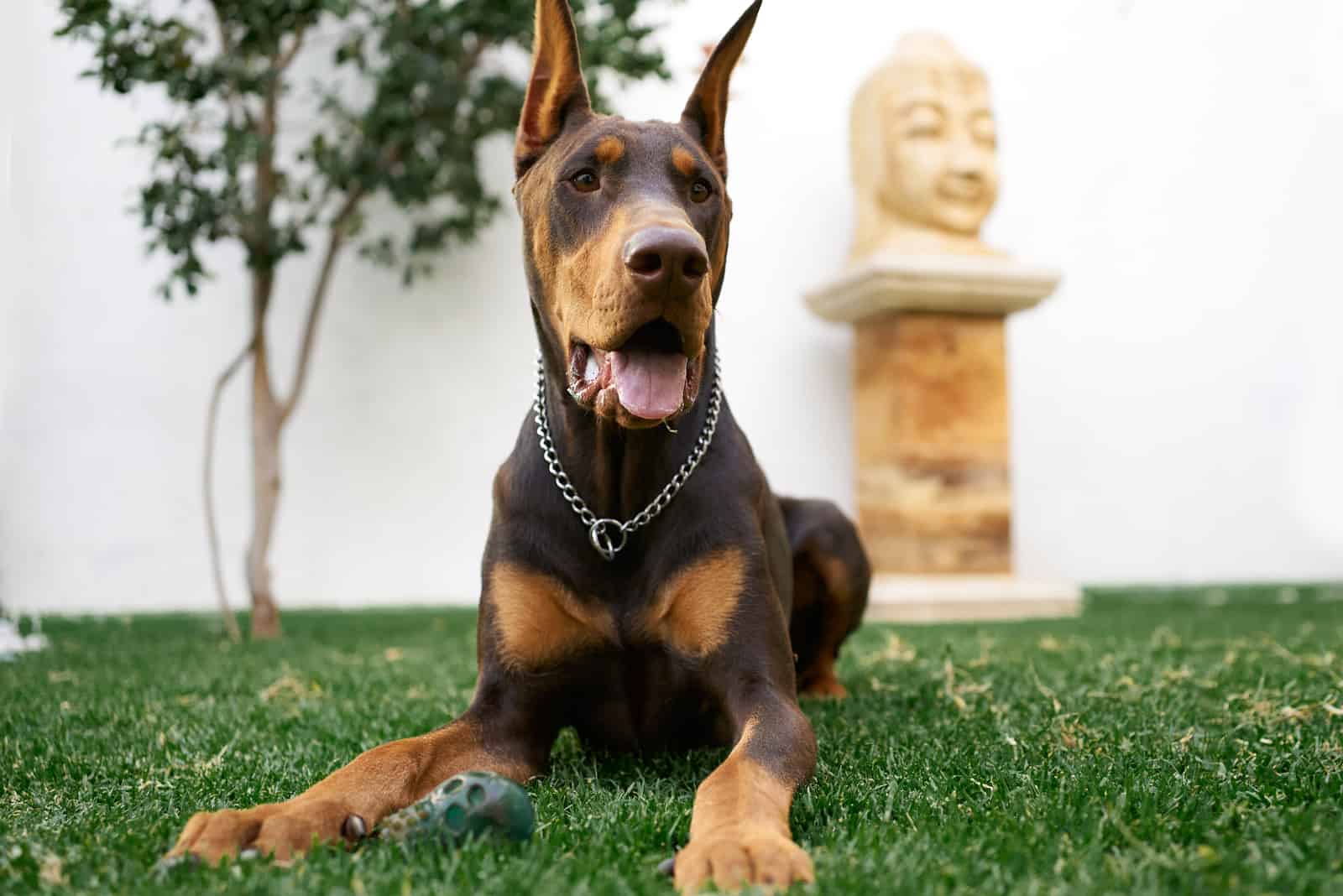
I’ve already mentioned the fact that Dobermans are not hypoallergenic dogs.
Still, they’re not that terrible either!
Compared to Huskies or Labradors, Dobermans are a delight!
These dogs are classified as moderate shedders, which means they need weekly brushing. Brush your Dobie’s coat two to three times a week to bring its shine back. Brushing is also a way of bonding, so use the opportunity and earn your dog’s respect.
Dobermans don’t need frequent bathing. Bathe them every two months and you guys should be fine. They don’t have that foul odor, and they should be bathed only when you notice debris and dirt on their coat.
Overbathing isn’t good for short-coated dogs as they can get flaky and itchy skin. Too much water and shampoo will dry out their skin and remove shine from their coat.
Grooming also includes regular teeth brushing, as well as nail trimming and ear cleaning. Even though Dobies have erect ears, they should still be checked in order to prevent infections.
Conclusion
If you came to this point to hear me say: This is the best one of all Doberman colors, you’re so wrong.
I love all dogs, not only this breed of dog breed, to say such a thing.
All recognized Doberman colors are great. They’re all lovely in their own ways. It’s only a matter of how easy it will be to find some coat colors in your area.
I recommend you don’t look for rare colors with Dobermans. Getting a dog with unusual looks is not worth it. You will end up with an ill dog in pain, and there’s rarely anything you can do to stop that painful condition.
As far as I’m concerned, I would pick any Doberman color. It’s their protective character and loyal temperament that makes these dogs so popular.
As always, it’s what’s on the inside that counts!
Read Next:
• 19 Dogs That Look Like Dobermans – Power And Beauty In One
• 9 Best Doberman Breeders In Oregon: Get Your Dobbie Here
